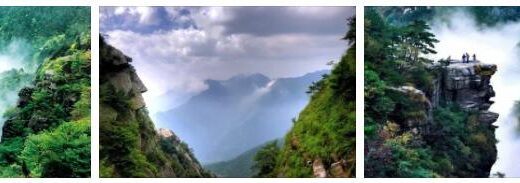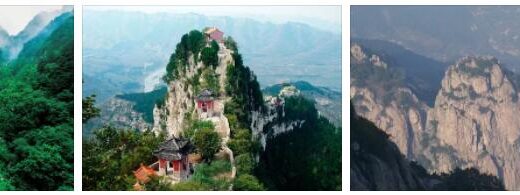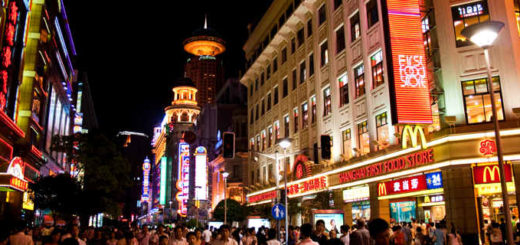Macau (World Heritage)
As the first European trading post in the South China Sea, Macau was under Portuguese administration from the mid-16th century until 1999. This is still visible today in the city, which, as a trading hub, advanced to the melting point of Asian and European culture. The legacy of the Portuguese enclave can be seen in the magnificent villas, the enchanting baroque churches and in the occidental culture and way of life.
Macau: facts
| Official title: | Historic Center of Macaou |
| Cultural monument: | Old Town of the first European trading post in China; from the 16th century to 1999 under Portuguese administration; historical city architecture, including a fortress, the oldest lighthouse in China, numerous baroque churches and monuments, most importantly the Basílica de São Paulo (1637, only preserved as a facade since a typhoon in 1835); City hall “Leal Senado” (built in 1784 in the style of a Portuguese manor house, new facade in 1870, with national library), cathedral (founded in 1580, current building 19th century) |
| Continent: | Asia |
| Country: | China |
| Location: | Macau |
| Appointment: | 2005 |
| Meaning: | Outstanding architectural evidence of the amalgamation of aesthetic, cultural and economic influences from East and West |
Colonial hub between East and West
Portuguese flair in China – that is what makes the city of Macau on the South China Sea so special. For almost 450 years the fortunes of the two countries were inextricably linked, and that on an area of only nine square kilometers. The colonial past is alive in the historic center of the city – in architecture and way of life, culture and cuisine.
In the middle of the 16th century, Macau was founded by the Portuguese as a trading and missionary station. In the centuries that followed, the history of the colony was marked by mutual tolerance: the Portuguese used the peninsula at the mouth of the Pearl River as a stopover on the trade route from Lisbon to Nagasaki, and from there the Jesuits promoted the spread of Christianity in the Far East. According to ethnicityology, the Chinese, in turn, carried out trade with Japan via Macau, because direct trade had been forbidden to them by the emperor. However, with the rise of neighboring Hong Kong in the 19th century, China lost interest in Macau and the city fell into a deep slumber. After the Second World War, neither Portugal nor China were particularly interested in the colony, but various attempts by Portugal Returning Macau to China failed. The handover succeeded after China and Great Britain reached an agreement on the return of Hong Kong. Macau reverted to China on December 20, 1999 and has the status of a special administrative region with a high degree of internal autonomy for a period of 50 years: Defense and foreign policy are regulated by China, domestic policy is shaped by Macau itself. The Portuguese (and European) The city’s heritage can be seen and felt everywhere. Although 95 percent of the approximately 480,000 residents are Chinese today, Macau is officially bilingual. In the city center, shops side by side sell Chinese and European goods. Christian and Chinese festivals and holidays equally determine life in the city.
The mountain fortress Fortaleza do Monte was part of the old city wall, which was once built to protect against the Dutch. From there you have a wonderful view over the northern part of the city. The City History Museum is also located there: Entire house fronts and shops have been recreated there, and audio-visual media provide an insight into life during the colonial era. The center of the old town is Largo do Senado, the most elegant square in Macau. It is lined with pink, yellow and whitewashed residential and commercial buildings, which, together with arcades and cozy restaurants, give the square a Mediterranean flair. On its south side is the old town hall Leal Senado, which was built in 1784 in the Portuguese colonial style. The inner courtyard of the villa-like building is decorated with the typical blue and white azulejo tiles. Even in the 21st century, there are still numerous spots in Macau where time seems to have stood still. The legacy of the seafaring empire has been preserved in the historic center of the city. Magnificent merchant villas, neat baroque churches and a European culture and way of life are reminiscent of times when the trade in silver, sandalwood and silk determined life in the city.
Over 60 churches can be found in the old town of Macau, the largest of which is the cathedral. The current building was erected in 1937 on the foundations of a previous building from the 16th century. To the left of this is the bishop’s residence. The most beautiful baroque church in the city is the Igreja de São Domingo with its magnificent altar. In the left side chapel there is a picture of Fatima, which is carried through the city every year on May 13th in a solemn procession with splendid Chinese colors. The city’s landmark is the ruins of the São Paulo basilica, which is located at the top of a wide flight of stairs. The church was once the most powerful church in the Far East. It was completed in 1627, but fell victim to a fire in 1835, so that today only its richly decorated front facade made of granite has been preserved. In the top of the gable a dove can be seen as a symbol of the Holy Spirit, in the middle Christ as Redeemer and below Mary, who prays defeats a dragon and at the same time protects a merchant ship. In this representation of Mary you can see the two functions of the former Portuguese colony Macau: the proselytization of China (symbolized by the dragon) and the trade with the Far East.



